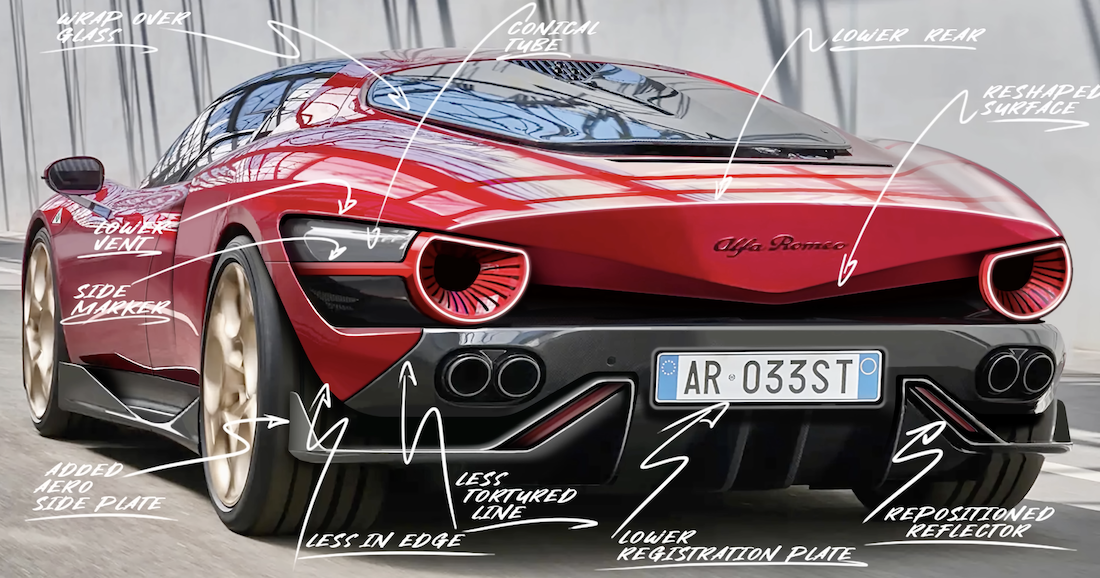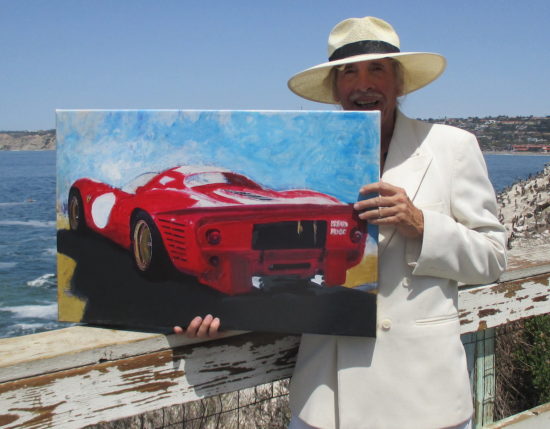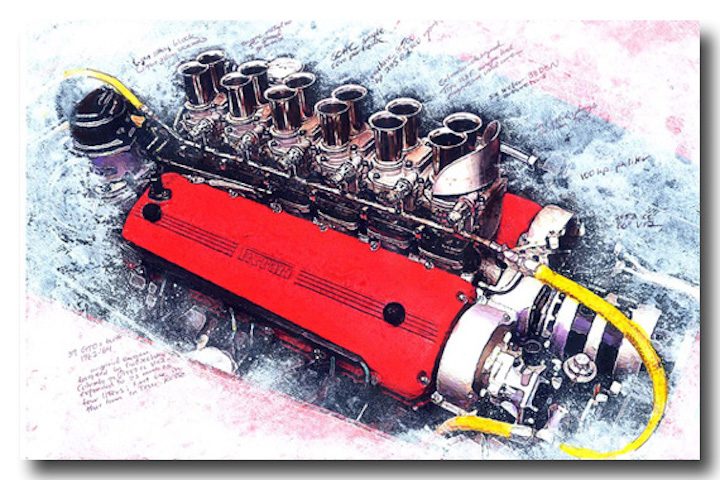by Wallace Wyss –
If there is anyone who could be called “a designer’s designer” it is Moroccan-born Frank Stephenson, a designer who has worked for several automakers, each time designing memorable cars. He still is a consultant in the industry.
He has been posting his design critiques on You Tube for some years now and it’s fun to watch as he rips the original designers a new a–uh, well let’ s say he’s good at criticizing in a constructive way. I particularly enjoyed his tear-up of a new Alfa that was intended to be a tribute car to the famous Alfa 33 Stradale. He shows that, even with a real T33 Stradale in front of them, the designers missed a lot of the original’s design cues and thus lost the new car’s ability to carry on the ambiance of the original’s styling to the modern age. You can watch this video at the end of this article.
Lately he is making videos emphasizing the importance of designers bringing their own creativity and vision to the design process. Trained the old fashioned way-pen-on-paper–at Art Center College of Design, he is now expounding on how Text-to-Image (T2I) generators and Artificial Intelligence (AI) will shake up car design as automakers see them as a possible replacement for human designers.
The program T2I allows car designers to input a written description of their desired design, and the machine generates a fully rendered and detailed model in seconds. That’s like a computer generating a sequel to the novel Gone with the Wind in seconds. (What a slap in the face to human novelists, I say…)
Conversely, Stephenson believes there is a role for AI and T2I generators in that they can quickly generate and test different concepts leaving it up to the human designer to focus more on refining the details.
Methinks, for a critic, he’s still being overly generous, reducing the role of humans too markedly, leaving humans with a sort of “What–all we get to do is plan the trim and paint?” reaction. He even predicts, using these tools, some truly groundbreaking cars will be hitting the market in the future.
Some automakers are already bragging of the strides they’ve made using this new technology. Audi, for instance, announced that it’s using in-house AI technology to design wheels. I say “today it’s wheels, tomorrow the whole car.” In praising the AI technology I think Frank is reducing the importance of human designers’ ability to bring their own creativity and vision to the design process.
And yet he voices fears that automakers might prefer to use these tools to do all the work for them. He feels that in the long run there may be a homogenization of design (basically all cars in a certain class will look alike).
And then here’s the problem which I haven’t heard him mention, of who, when a new production design is announced, gets the design credit? If a machine originates it, we won’t be able to say “Franz von Holzhausen did the first design” or “Giugiaro is credited with the shape” etc. Are we supposed to say “Machine no A-502 is credited with the design originally?”
You won’t hear it from me. I’m not going to praise a machine. I still like humans.
Interestingly the Writer’s Guild just fought a battle with film producers which they won (sort of) with their new contract stating ChatGPT generated scripts will be credited to the first screenwriter who is handed the freshly printed script so they can shape it for production. Screenwriters were genuinely worried Hollywood producers now have the means to go around them and would have if the strike had continued.
I don’t know what The Rise of The Machines portends for design schools like the Art Center College of Design in Pasadena and the Center for Creative Studies in Detroit. Should new design students still enroll or will their potential jobs be eliminated by robots by the time they graduate two or three years from now?
To me there’s nothing like a master of design like Giugiaro walking out to inspect freshly minted clay models and running his hands over the surface and then turning to assistants and saying “This rear spoiler needs 12mm more off, that fender needs…” etc.
It reminds me of photography. I remember when nature photographers like Ansel Adams were exalted but now, with a mere telephone you can take a picture of the same scene–say Bridal Veil Falls in Yosemite–that has artistic potential. With some computer work afterward, you can create a digital photo to be as pleasing as the Adams shot that inspired it.
I plead “Frank–be careful with your praise-you’re paving the way for the replacement of human designers with robots.”
What will happen when they come for you?
Let us know what you think in the Comments.
THE AUTHOR: Wallace Wyss is a novelist and fine artist, using computers for nothing other than for typing.
Redesigning Alfa’s Nearly Flawless 33 Stradale! video by Frank Stephenson






Speak Your Mind